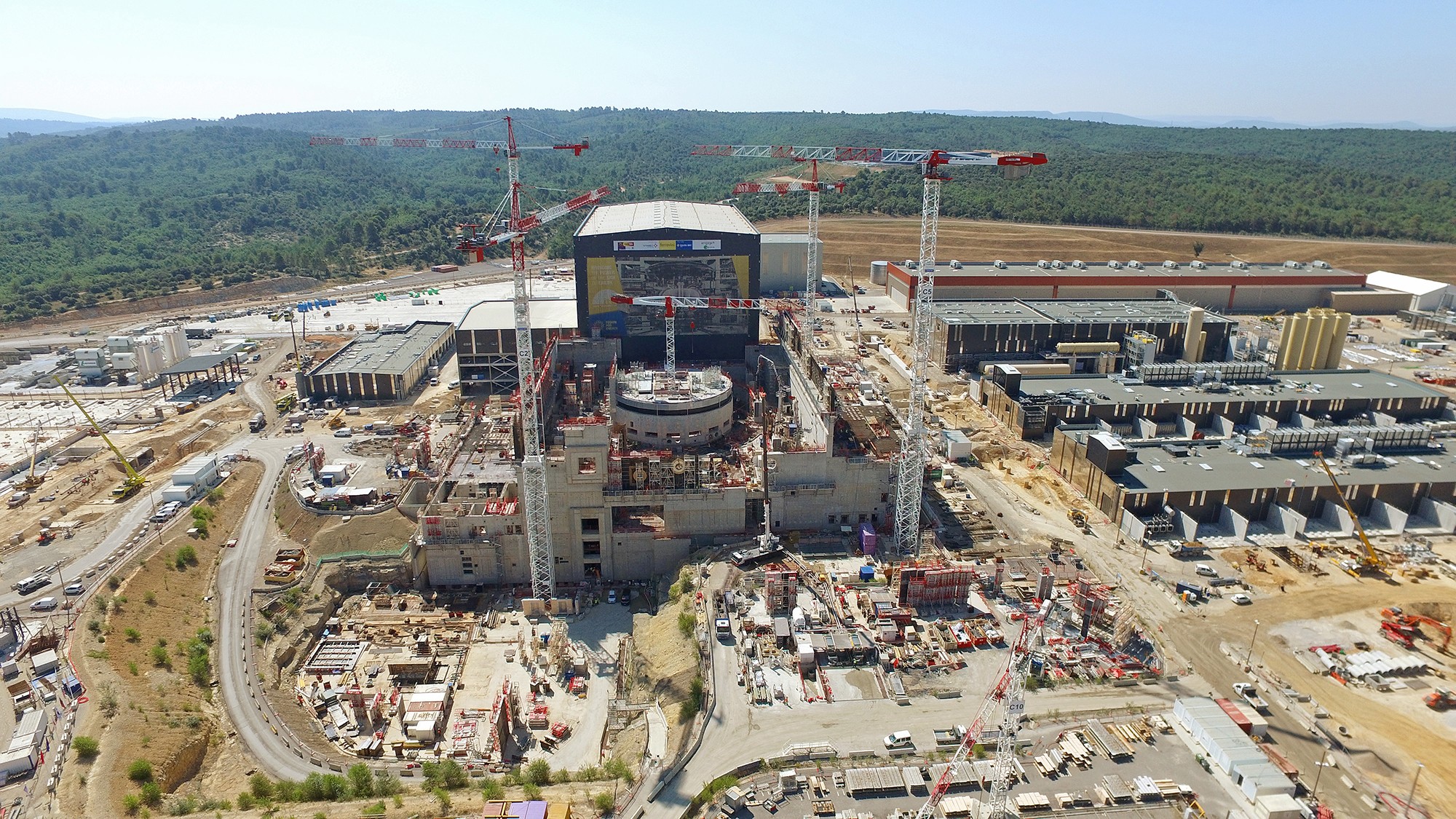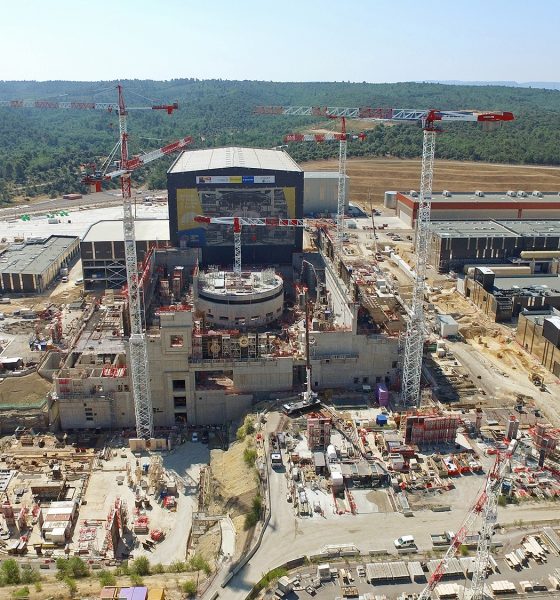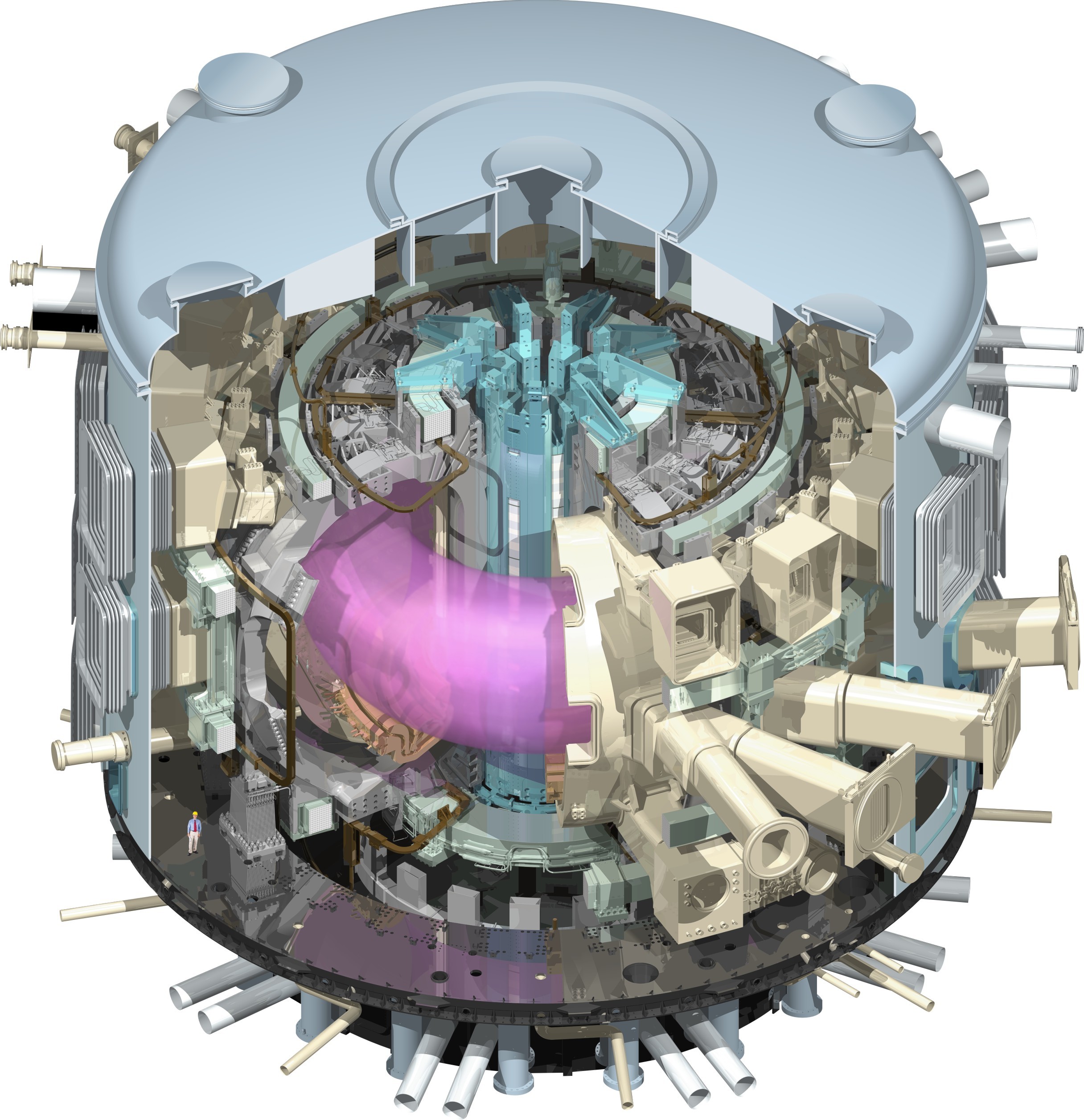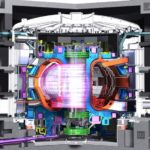

News
Advancement in nuclear fusion tech continues transition to clean energy future
The development of unlimited, carbon-neutral, and safe energy through nuclear fusion is expanding around the world, and scientists at the Atomic Energy Authority in the United Kingdom (AEA) have recently cleared one more key hurdle to making it a commercial reality: exhausting gas that’s hotter than the Sun. The hot plasma created during fusion power generation needs to cool down as it’s being used, but at its extreme temperatures, there aren’t any materials available to withstand the heat. Now, that problem appears to have been solved.
The AEA team’s answer to the heat issue is a “sacrificial wall” design which will require replacement every few years. Plasma will be moved down a path within its fusion generator’s holding device to cool it slightly before coming into contact with a specially designed wall for the remainder of the cooling process. However, even at a lower temperature, the heat will degrade the wall’s integrity over time and need to be changed. With the first nuclear fusion reactor set to turn on in seven years, AEA’s fusion exhaust system may be one of the developments that keeps it on schedule.
It’s said that imitation is the sincerest form of flattery, and recent fusion energy developments show that sentiment’s considerations don’t remain within the bounds of Earth. At about 90 million miles away, our Sun is essentially a fusion reactor in the sky, its large size creating enough gravity to force atoms together at its core and release massive amounts of energy. Artificially reproducing the conditions needed for this kind of generation is tough, but the attempt has been going on since the 1960s. The AEA is representative of one agency in a global endeavor.
The most advanced nuclear fusion project today is ITER, the International Nuclear Fusion Research experimental reactor in southern France, which hosts scientists from 35 countries dedicated to achieving the first ever positive fusion energy production. Their device is called a “tokamak”, and its structure is something like a flattened donut (torus) encapsulated by rings of powerful magnetic coils. The magnetic fields generated by the coils both suspend the plasma created by extreme heat and squeeze the plasma into a small space to create the fusion reactions. ITER is scheduled to turn its reactor on in 2025.
- A visualization of the ITER tokamak in operation.| Credit: ITER.org/Jamison Daniel, Oak Ridge Leadership Computing Facility
- A computer-animated visualization of the ITER tokamak in operation. | Credit: ITER.org
Creating fusion in a laboratory involves two primary parts: 1) creating plasma, a soup of electrons and nuclei released from their atomic structures due to extremely high temperatures; and 2) merging the nuclei of two different types of atoms, generally different forms of hydrogen. The heat in a tokamak is generated from both the magnetic field movement and external heating devices, and the nuclei merge is achieved by squeezing the plasma using those same magnetic fields into a constricted area to encourage collisions. Essentially, the high heat excites the atomic particles, speeding their motion, and their energetic movements within the magnetically confined area significantly increases the likelihood the nuclei will crash and fuse together. When this fusion occurs, a massive amount of energy is released, the object of desire for all involved in this field of research.
The amount of heat needed to convince atoms to release their electrons and form plasma is in the range of millions of degrees Celsius, the core of the Sun itself being 15 million degrees. Without high gravity to aid with squeezing plasma, as in the Sun’s case at 27 times the gravity of Earth, reactors on our planet need to heat well beyond the Sun’s temperature to ensure the atomic particles in the plasma collide and fuse. ITER’s tokamak heats to 100 million degrees Celsius.

All of this heating and magnetic control requires its own energy input, and this is where the current state of fusion energy development is focused. The ratio of energy used and energy produced is called “Q”, the desired amount aimed for by scientists in the field being 10:1. When ten times the energy is produced by nuclear fusion than used to produce it, it will have advanced to a level ready for further development as an alternative power source, or so goes the thinking. ITER’s specific goal is to produce 500 MW of fusion power from 50 MW of heating power.
Once energy is released from the fusion process, it can then be captured to create steam to power generators currently using other power sources such as coal and natural gas. This is another benefit purported benefit of fusion power; it can plug directly into existing power grids, minimizing any disruptions or requirements for new equipment. Combined with the abundant availability of hydrogen and the lack of greenhouses gases or radioactive waste, there are high hopes for fusion’s future as an all-in-one energy solution.

Elon Musk
Elon Musk’s X will start using a Tesla-like software update strategy
The initiative seems designed to accelerate updates to the social media platform, while maintaining maximum transparency.

Elon Musk’s social media platform X will adopt a Tesla-esque approach to software updates for its algorithm.
The initiative seems designed to accelerate updates to the social media platform, while maintaining maximum transparency.
X’s updates to its updates
As per Musk in a post on X, the social media company will be making a new algorithm to determine what organic and advertising posts are recommended to users. These updates would then be repeated every four weeks.
“We will make the new 𝕏 algorithm, including all code used to determine what organic and advertising posts are recommended to users, open source in 7 days. This will be repeated every 4 weeks, with comprehensive developer notes, to help you understand what changed,” Musk wrote in his post.
The initiative somewhat mirrors Tesla’s over-the-air update model, where vehicle software is regularly refined and pushed to users with detailed release notes. This should allow users to better understand the details of X’s every update and foster a healthy feedback loop for the social media platform.
xAI and X
X, formerly Twitter, has been acquired by Elon Musk’s artificial intelligence startup, xAI last year. Since then, xAI has seen a rapid rise in valuation. Following the company’s the company’s upsized $20 billion Series E funding round, estimates now suggest that xAI is worth tens about $230 to $235 billion. That’s several times larger than Tesla when Elon Musk received his controversial 2018 CEO Performance Award.
As per xAI, the Series E funding round attracted a diverse group of investors, including Valor Equity Partners, Stepstone Group, Fidelity Management & Research Company, Qatar Investment Authority, MGX, and Baron Capital Group, among others. Strategic partners NVIDIA and Cisco Investments also continued support for building the world’s largest GPU clusters.
News
Tesla FSD Supervised wins MotorTrend’s Best Driver Assistance Award
The decision marks a notable reversal for the publication from prior years, with judges citing major real-world improvements that pushed Tesla’s latest FSD software ahead of every competing ADAS system.

Tesla’s Full Self-Driving (Supervised) system has been named the best driver-assistance technology on the market, earning top honors at the 2026 MotorTrend Best Tech Awards.
The decision marks a notable reversal for the publication from prior years, with judges citing major real-world improvements that pushed Tesla’s latest FSD software ahead of every competing ADAS system. And it wasn’t even close.
MotorTrend reverses course
MotorTrend awarded Tesla FSD (Supervised) its 2026 Best Tech Driver Assistance title after extensive testing of the latest v14 software. The publication acknowledged that it had previously criticized earlier versions of FSD for erratic behavior and near-miss incidents, ultimately favoring rivals such as GM’s Super Cruise in earlier evaluations.
According to MotorTrend, the newest iteration of FSD resolved many of those shortcomings. Testers said v14 showed far smoother behavior in complex urban scenarios, including unprotected left turns, traffic circles, emergency vehicles, and dense city streets. While the system still requires constant driver supervision, judges concluded that no other advanced driver-assistance system currently matches its breadth of capability.
Unlike rival systems that rely on combinations of cameras, radar, lidar, and mapped highways, Tesla’s FSD operates using a camera-only approach and is capable of driving on city streets, rural roads, and freeways. MotorTrend stated that pure utility, the ability to handle nearly all road types, ultimately separated FSD from competitors like Ford BlueCruise, GM Super Cruise, and BMW’s Highway Assistant.
High cost and high capability
MotorTrend also addressed FSD’s pricing, which remains significantly higher than rival systems. Tesla currently charges $8,000 for a one-time purchase or $99 per month for a subscription, compared with far lower upfront and subscription costs from other automakers. The publication noted that the premium is justified given FSD’s unmatched scope and continuous software evolution.
Safety remained a central focus of the evaluation. While testers reported collision-free operation over thousands of miles, they noted ongoing concerns around FSD’s configurable driving modes, including options that allow aggressive driving and speeds beyond posted limits. MotorTrend emphasized that, like all Level 2 systems, FSD still depends on a fully attentive human driver at all times.
Despite those caveats, the publication concluded that Tesla’s rapid software progress fundamentally reshaped the competitive landscape. For drivers seeking the most capable hands-on driver-assistance system available today, MotorTrend concluded Tesla FSD (Supervised) now stands alone at the top.
News
Elon Musk’s Grokipedia surges to 5.6M articles, almost 79% of English Wikipedia
The explosive growth marks a major milestone for the AI-powered online encyclopedia, which was launched by Elon Musk’s xAI just months ago.

Elon Musk’s Grokipedia has grown to an impressive 5,615,201 articles as of today, closing in on 79% of the English Wikipedia’s current total of 7,119,376 articles.
The explosive growth marks a major milestone for the AI-powered online encyclopedia, which was launched by Elon Musk’s xAI just months ago. Needless to say, it would only be a matter of time before Grokipedia exceeds English Wikipedia in sheer volume.
Grokipedia’s rapid growth
xAI’s vision for Grokipedia emphasizes neutrality, while Grok’s reasoning capabilities allow for fast drafting and fact-checking. When Elon Musk announced the initiative in late September 2025, he noted that Grokipedia would be an improvement to Wikipedia because it would be designed to avoid bias.
At the time, Musk noted that Grokipedia “is a necessary step towards the xAI goal of understanding the Universe.”
Grokipedia was launched in late October, and while xAI was careful to list it only as Version 0.1 at the time, the online encyclopedia immediately earned praise. Wikipedia co-founder Larry Sanger highlighted the project’s innovative approach, noting how it leverages AI to fill knowledge gaps and enable rapid updates. Netizens also observed how Grokipedia tends to present articles in a more objective manner compared to Wikipedia, which is edited by humans.
Elon Musk’s ambitious plans
With 5,615,201 total articles, Grokipedia has now grown to almost 79% of English Wikipedia’s article base. This is incredibly quick, though Grokipedia remains text-only for now. xAI, for its part, has now updated the online encyclopedia’s iteration to v0.2.
Elon Musk has shared bold ideas for Grokipedia, including sending a record of the entire knowledge base to space as part of xAI’s mission to preserve and expand human understanding. At some point, Musk stated that Grokipedia will be renamed to Encyclopedia Galactica, and it will be sent to the cosmos.
“When Grokipedia is good enough (long way to go), we will change the name to Encyclopedia Galactica. It will be an open source distillation of all knowledge, including audio, images and video. Join xAI to help build the sci-fi version of the Library of Alexandria!” Musk wrote, adding in a later post that “Copies will be etched in stone and sent to the Moon, Mars and beyond. This time, it will not be lost.”










